Interoperability in Healthcare: Innovating through Data Standardisation
In the fast-paced and ever-evolving landscape of healthcare, the necessity for effective communication and data exchange is critical. Healthcare professionals, researchers, and policymakers depend on precise and timely information to make vital decisions affecting patient care and overall health outcomes. Unfortunately, the absence of interoperability among various healthcare systems and platforms has significantly obstructed this objective. This is where the concept of data standardization becomes invaluable, acting as a key facilitator of seamless data flow across different entities.
Understanding the Concept of Data Standardization in Healthcare
Data standardization pertains to the systematic approach of creating a unified set of rules and frameworks for organizing and formatting data. It guarantees that information is consistently captured, stored, and communicated in a uniform manner, irrespective of the system or platform in use. Within the realm of healthcare, data standardization is pivotal for fostering seamless interoperability and efficient exchange of health information.
This process entails the adoption and implementation of standardized formats and terminologies for healthcare data. It encompasses defining the structure of data elements, their properties, and the interrelations between them. Such standardization guarantees that data is reliably captured and stored across various systems, simplifying the processes of exchanging and interpreting information across platforms.
By instituting data standardization, healthcare organizations can effectively tackle the challenges posed by the diversity of healthcare systems and platforms. This enables smooth integration and information exchange, allowing healthcare providers to access and share patient data seamlessly across different systems. The result is comprehensive and coordinated care, which also bolsters research initiatives and enhances public health efforts.
Why Interoperability is Essential for Effective Healthcare Delivery

Interoperability refers to the capability of disparate systems, applications, or devices to exchange and utilize information without barriers. In the healthcare sector, interoperability empowers providers to access and share patient data across various systems, facilitating holistic and coordinated care. It also streamlines information exchange between healthcare organizations, researchers, and public health institutions, thereby supporting evidence-based decision-making and research initiatives.
<pThe necessity of effective interoperability is paramount for establishing a patient-centered healthcare system. It allows healthcare providers to have a comprehensive understanding of a patient’s medical history, irrespective of the data’s storage location or the originating system. This holistic view leads to improved care coordination, reduction in medical errors, and enhancement of overall patient outcomes.
Furthermore, interoperability is crucial for advancing research and public health initiatives. By facilitating the exchange of data among diverse organizations and systems, researchers gain access to a broader data pool for comprehensive studies and analyses. This capability also supports population health management, enabling public health agencies to gather and analyze data from multiple sources to identify trends, develop targeted interventions, and evaluate the effectiveness of health programs.
Identifying the Key Challenges to Achieving Interoperability in Healthcare
Despite its critical importance, achieving interoperability in the healthcare sector remains a complex and challenging task. Several factors contribute to the obstacles encountered in realizing seamless data exchange:
1. The Challenge of Insufficient Data Standards
In the absence of standardized data formats and vocabularies, individual healthcare systems may utilize distinct structures and terminologies for data capture and storage. This lack of uniformity complicates accurate data exchange and interpretation. For instance, one system might employ a different code or terminology for a specific medical condition than another, resulting in confusion and potential errors during data sharing.
To surmount this challenge, healthcare organizations must adopt widely accepted data standards such as Health Level Seven International (HL7) and Fast Healthcare Interoperability Resources (FHIR). These standards provide a foundational framework for data exchange, ensuring compatibility among various systems. By adhering to these protocols, healthcare organizations can significantly reduce data inconsistencies and cultivate seamless interoperability.
2. The Complexity of Diverse Healthcare IT Systems

Healthcare organizations frequently utilize a multitude of IT systems, including electronic health record (EHR) systems, billing software, and laboratory information systems. These systems are often developed by different vendors and may exhibit varying levels of interoperability, complicating data exchange processes.
To address this issue, healthcare organizations should invest in interoperable IT systems that facilitate data standardization and seamless integration. This includes the adoption of EHR systems, clinical data repositories, and health information exchanges that align with established standards. By ensuring compatibility between these systems, healthcare organizations can promote efficient data exchange and enhance overall interoperability.
3. Navigating Privacy and Security Concerns
Given that healthcare data is incredibly sensitive and subject to stringent privacy regulations, ensuring a secure and compliant data exchange process while maintaining patient confidentiality adds a layer of complexity to achieving interoperability. Healthcare organizations must implement stringent security measures, such as encryption and access controls, to protect patient data during both transmission and storage.
To effectively address privacy and security challenges, healthcare organizations should develop clear policies and procedures governing data sharing, ensuring adherence to regulations like the Health Insurance Portability and Accountability Act (HIPAA). Additionally, they should leverage technologies that facilitate secure data exchange, such as secure messaging platforms and secure file transfer protocols. By prioritizing patient data protection, healthcare organizations can foster trust in data exchange processes and further support interoperability efforts.
4. Issues Related to Legacy Systems
Many healthcare organizations continue to depend on legacy systems that were not originally designed with interoperability in mind. Integrating these outdated systems with newer, more interoperable technologies can prove both challenging and costly. Legacy systems often utilize obsolete data formats or lack the necessary interfaces to enable data exchange with modern systems.
To navigate this issue, healthcare organizations should explore interoperability solutions capable of interfacing with legacy systems. This could entail employing middleware or integration platforms that bridge the gap between legacy systems and contemporary technologies. By enabling data exchange between various systems, healthcare organizations can harness the advantages of interoperability while optimizing their existing investments in legacy infrastructure.
5. The Impact of Inconsistent Data Quality

Data quality challenges, such as incomplete or inaccurate information, often arise from manual data entry errors or discrepancies in documentation practices. These inconsistencies hinder the efficient exchange and interpretation of data. For example, if a healthcare provider incorrectly records a patient’s medication dosage, it can lead to harmful consequences when this data is shared with other providers.
To uphold data quality, healthcare organizations should implement robust data validation processes and tools that can identify and rectify errors in real time. This may involve automated checks for data completeness, accuracy, and consistency. Additionally, providing training and education for healthcare professionals on best practices for data entry can significantly enhance data quality and promote a culture of interoperability.
Unlocking the Advantages of Data Standardization in Healthcare
Implementing data standardization strategies within healthcare offers a wealth of benefits, including:
1. Enhanced Interoperability Across Systems
By establishing common data formats and terminologies, data standardization facilitates seamless data exchange among disparate systems. This not only improves care coordination but also enhances research efforts and optimizes population health management. Standardized data allows healthcare providers to access and share patient information more efficiently, fostering comprehensive and coordinated care across various settings.
2. Improved Decision-Making Through Consistent Data
Access to standardized and reliable data empowers healthcare professionals to make informed decisions based on precise and current information. This leads to improved patient care and better health outcomes. For instance, standardized data can support clinical decision support systems, delivering evidence-based recommendations that guide healthcare providers in making accurate diagnoses and treatment choices.
3. Boosting Efficiency and Achieving Cost Savings
Standardized data minimizes the time and resources required for data integration and interpretation, resulting in streamlined workflows and significant cost savings. It reduces the necessity for manual data mapping and reconciliation, thereby decreasing errors and enhancing overall efficiency. For example, with standardized data, healthcare organizations can automate data exchange processes, reducing manual data entry and mitigating the risk of mistakes.
4. Building an Interoperable Healthcare Ecosystem
Data standardization lays the groundwork for establishing an interoperable healthcare ecosystem. It enables the seamless integration of various healthcare systems, devices, and applications, nurturing innovation and collaboration. With standardized data, healthcare organizations can leverage emerging technologies like artificial intelligence and machine learning to analyze extensive datasets and derive insights that enhance care delivery and patient outcomes.
Implementing Best Practices for Effective Data Standardization in Healthcare
To successfully achieve data standardization and promote interoperability in the healthcare industry, the following best practices should be prioritized:
1. Embracing Common Data Standards
Healthcare organizations must adopt universally recognized data standards, such as Health Level Seven International (HL7) and Fast Healthcare Interoperability Resources (FHIR). These standards provide a cohesive framework for data exchange and ensure compatibility among different systems. By embracing common data standards, healthcare organizations can facilitate seamless interoperability and overcome the challenges posed by data heterogeneity.
2. Ensuring Consistent Terminology Usage
Standardizing terminologies and coding systems, such as the International Classification of Diseases (ICD) and Current Procedural Terminology (CPT), enhances the accuracy and reliability of exchanged data. It enables effective data analysis and semantic interoperability. The consistent application of terminologies guarantees that healthcare professionals can comprehend and interpret data uniformly, regardless of the originating system or organization.
3. Investing in Interoperable Technologies
Healthcare organizations should strategically invest in interoperable IT systems that support data standardization and facilitate seamless integration. This includes the adoption of EHR systems, clinical data repositories, and health information exchanges that comply with recognized standards. By investing in interoperable technologies, healthcare organizations can establish a robust framework for data exchange and interoperability, enabling effective communication and collaboration.
4. Prioritizing Training and Education
Healthcare professionals should receive comprehensive training on data standardization principles and best practices. This fosters awareness and understanding of the significance of data quality, accuracy, and interoperability while encouraging consistent data entry practices. Training should encompass topics such as the utilization of standardized terminologies, data validation techniques, and the effective use of IT systems to ensure data quality and interoperability.
5. Fostering Collaboration and Partnerships
Collaboration among healthcare organizations, policymakers, and technology vendors is crucial for advancing data standardization initiatives. By working together, stakeholders can develop and implement common data standards, exchange best practices, and collectively address interoperability challenges. Such collaboration can also stimulate innovation and the creation of interoperable solutions that meet the dynamic needs of the healthcare industry.
Frequently Asked Questions About Data Standardization in Healthcare
1. What is data standardization in healthcare?
Data standardization refers to the establishment of a unified set of rules and structures for organizing and formatting data within healthcare. It ensures that information is consistently captured, stored, and communicated, thereby enabling seamless interoperability and efficient exchange of health information.
2. What challenges hinder achieving interoperability in healthcare?
Several challenges impede the achievement of interoperability in healthcare, including:
- Lack of data standards: Without standardized formats and vocabularies, the accuracy of data exchange and interpretation is compromised.
- Diverse healthcare IT systems: Different IT systems developed by various vendors may have inconsistent interoperability levels, complicating data exchange.
- Privacy and security concerns: The highly sensitive nature of healthcare data necessitates secure and compliant data exchange, adding complexity to interoperability efforts.
- Legacy systems: Integrating outdated systems with modern, interoperable technologies can be both challenging and expensive.
- Inconsistent data quality: Variations in documentation practices and manual data entry errors lead to data inconsistencies, hampering effective exchange and interpretation.
3. What are the advantages of data standardization in healthcare?
Implementing data standardization strategies in healthcare offers numerous advantages, including:
- Improved interoperability: Common data formats and vocabularies facilitate seamless data exchange and coordination of care across different systems.
- Enhanced decision-making: Access to standardized and reliable data empowers healthcare professionals to make informed decisions based on accurate information.
- Efficiency and cost savings: Standardized data streamlines workflows and reduces the time and effort required for data integration, resulting in significant cost savings.
- Interoperable healthcare ecosystem: Data standardization fosters innovation and collaboration, enabling the integration of various systems, devices, and applications in healthcare.
4. What best practices should be followed for effective data standardization in healthcare?
To achieve successful data standardization and promote interoperability in healthcare, the following best practices should be adopted:
- Adopt common data standards such as HL7 and FHIR.
- Ensure consistent terminology usage and coding systems for accurate and reliable data exchange.
- Invest in interoperable technologies, including EHR systems and clinical data repositories.
- Provide training and education for healthcare professionals on data standardization principles and best practices.
- Encourage collaboration and partnerships among healthcare organizations, policymakers, and technology vendors to advance data standardization initiatives.


